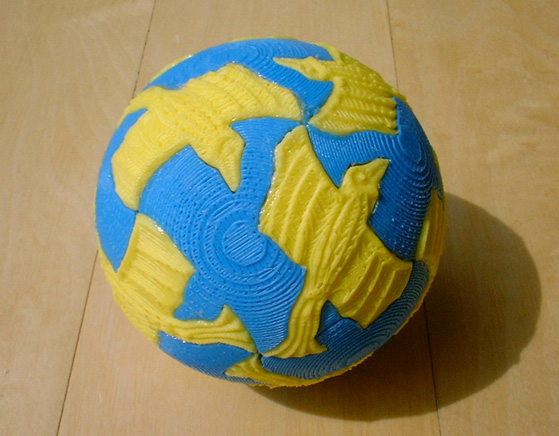Suppose
you want to design roughly spherical, smooth balls, implemented by a
B-spline or CC-subdivision surface, and decorate it with
six "cubistic" fish as shown on the right.
What would be your starting model
or control polygon ?
How do you define a suitable texture and
appropriate texture coordinates on your surface ?


Escher tiling with 12 lizards

Escher tiling with 24 birds

Tiling with 60 butterflies

